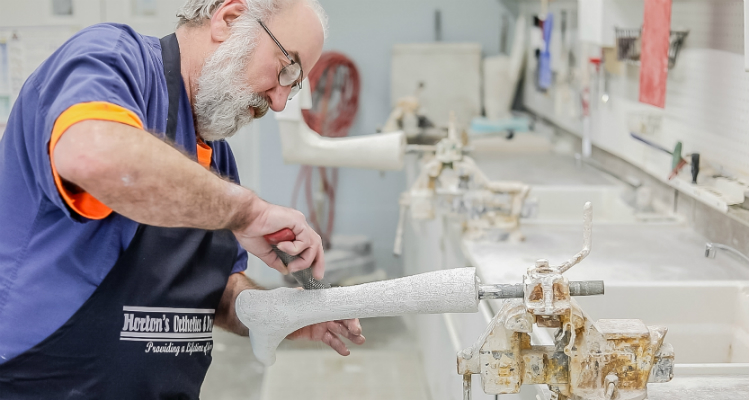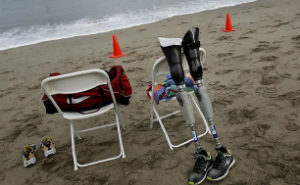If you have ever wondered about the medical titles you see in medical buildings – or in our very own name – we are here to break down those specialist terms for you.
You can certainly be excused for not knowing the nuts and bolts of “O&P.” But when you are in need of the services of one of these dedicated orthotics and prosthetics professionals, it is helpful to know what to expect as well as the extensive training required to be either an orthotist or a prosthetist.
Orthotist
This specialty is more than just “belts and braces,” so it helps to know what orthotics itself is, as well as what the practitioners in this crucial field do.
What do orthotists do?
An orthotics practitioner is truly a full-service professional. He or she conducts patient examinations and provides additional care related to your injury or condition. This professional not only measures you for the device, but also designs and builds it. After the custom orthosis is completed, he or she will fit it and provide information about proper use. The practitioner then conducts follow-up appointments to supervise its success.
What kind of training does an orthotist have?
An orthotist follows up a four-year college degree with a Master’s degree within the O&P field. A related residency then must be completed. He or she must also take exams to become certified by the relevant national board of professionals such as the American Board for Certification in Orthotics, Prosthetics and Pedorthics (ABC).
What is an orthosis?
An orthosis refers to any external device that corrects problems affecting your skeletal, muscle or nervous system. Among the most common are braces, neck collars, splints, body jackets, orthopedic shoes, cages, and supports. There are hundreds of available orthotics, due to the available combination of materials and interchangeable parts.
Prosthetist
Prosthetics are colloquially known as “artificial limbs,” but the field is a complex one requiring practitioners to be versed in a variety of prosthetic options.
What does a prosthetist do?
Prosthetists are full-service professionals, conducting examinations and fittings, designing and building the prosthetics, then overseeing aftercare. Often a patient will need both a temporary prosthetic as well as a permanent one. In some cases, patients might request additional prosthetics – for instance, sports prosthetics for running, or waterproof limbs for swimming.
What kind of training does a prosthetist have?
Much like an orthotist, a prosthetist must attain a Master’s degree in a relevant field and then complete an appropriate residency. Finally, he or she must achieve certification by a nationally recognized board, such as ABC, before going into practice.
What is a prosthetic?
Amputees requiring replacement arms, legs, hands, or feet have a variety of options. Lower and upper prosthetic limbs can be either “full” or “partial,” with several related subcategories of prosthetics, depending on the kind of amputation and the patient’s specific needs.
Get to Know the Horton’s Team
To find out more about our orthotics and prosthetics professionals and about how to set up a consultation, contact Horton’s O&P today. We will be happy to set up a consultation at one of our Arkansas locations, so please call 501-683-8889 for more information.
[maxbutton name=”Download Prosthetics 101″]




Leave a Reply